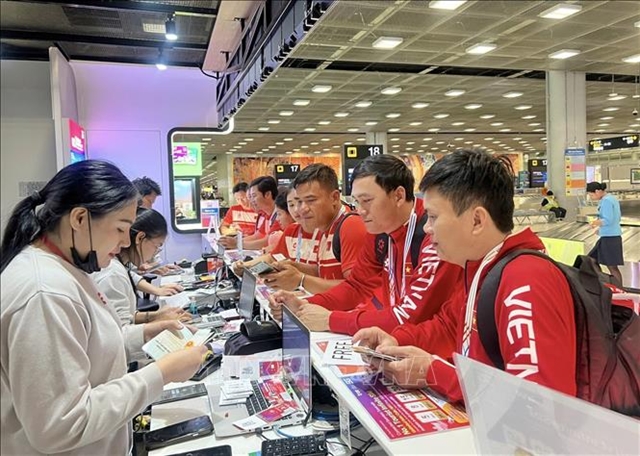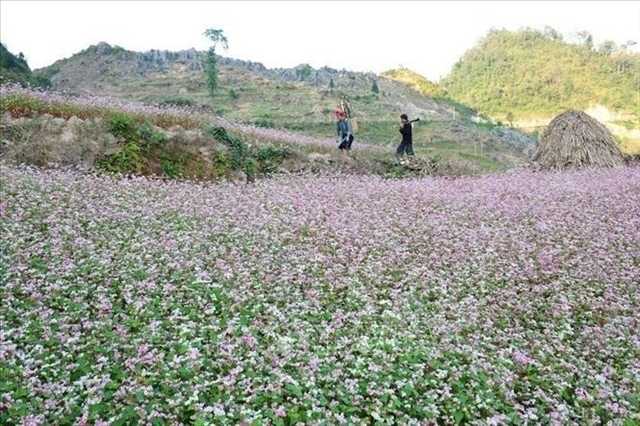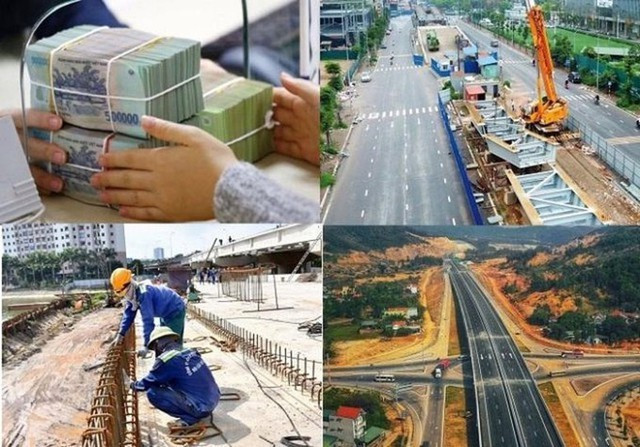 Talking Shop
Talking Shop

 |
Nguyễn Văn Hội, director of the MoIT's Institute of Industrial Strategy and Policy Research.
Việt Nam's border trade has achieved positive results despite difficulties due to the COVID-19 pandemic. The economy of the border provinces has continued to maintain positive growth, and many provinces have had a higher growth rate than the national average. Border trade activities have contributed significantly to the socio-economic development of border provinces. However, there are still many difficulties that need to be addressed.
Nguyễn Văn Hội, director of the Institute of Industrial Strategy and Policy Research, Ministry of Industry and Trade, spoke to Vietnam News Agency about this issue.
How did border trade activities develop after two years of being affected by the pandemic?
After two years of being affected by the COVID-19 pandemic, border trade activities faced many difficulties but also had advantages.
Border trade activities at border gates were restricted according to policies in each country, especially at auxiliary border gates.
In addition, due to the impact of COVID-19, the pandemic prevention policies were implemented at different times in different countries, causing difficulties for trade activities between Việt Nam and neighbouring countries of China, Laos and Cambodia.
However, there were also advantages. The pandemic reduced negative trade activities along border lines, especially smuggling and trade fraud via secondary border gates and border openings.
The cross-border import and export values in the past two years increased strongly. Only Laos did not increase much each year, reaching just over US$1 billion.
Việt Nam's border trade value with China increased by more than 20 per cent in those two years. The trade value reached over $26 billion out of the total bilateral trade value of $133 billion in 2020, and $33 billion out of a total of $162 billion in 2021. This growth rate was the largest in the pandemic period.
Meanwhile, Việt Nam's border trade value with Cambodia also grew strongly. It reached $3.5 billion out of the total bilateral trade value at $5 billion in 2020, and $5.5 billion out of a total bilateral trade value of $9 billion in 2021.
What is the role of border trade activities in the context of safe adaptation to the COVID-19 pandemic?
The role of cross-border trade is quite important because it has contributed to promoting bilateral trade turnover between Việt Nam and China, Laos and Cambodia, as the countries tightened trade activities due to the pandemic, meaning many border gates and ports were locked down. Therefore, Vietnamese enterprises had flexibility in import and export activities when changing trade activities to land or changing border gates to trade goods.
This flexibility has made an important contribution to promoting border trade activities in particular as well as bilateral trade in general in the context of COVID-19 changing global production and supply chains.
The businesses also had different strategies for trade in different periods to be able to maintain the supply of input for production, especially for pandemic prevention and production of essential goods.
In addition, they also had flexibility in the delivery of goods such as car and driver transfers at border areas. It facilitated the circulation of goods.
At present, policies on attracting investment in trade infrastructure at the border areas are still not effective. What are your suggestions for this problem?
The first difficulty for developing infrastructure in the border areas is the specific socio-economic conditions of the mountainous and remote areas.
Therefore, investment in infrastructure at border areas is really difficult, especially commercial service infrastructure, logistics, border gates, border markets, supermarkets, trading centres, warehouses and border transshipment centres.
The Prime Minister approved on February 25, 2021, the programme on the development of border trade infrastructure by 2025 with a vision to 2030. Therefore, in the next five years, ministries and sectors need to focus on mobilising resources, including budget and funds from enterprises to have strong investment in border trade infrastructure including product introduction centres, freight forwarding and yards.
In addition, provincial investment is needed, though most border provinces face many difficulties. They need to base on the Government's mechanisms, policies and decisions to put more investment in border infrastructure, including infrastructure of border traffic, electricity, water supply and telecommunications, and other essential service infrastructure for border trade activities. Promotion of the investment will boost the development of border trade in the future.
Infrastructure development is the most important but the most difficult factor. However, with the developing socio-economic conditions as well as the attention of the Government, ministries and localities, they can attract businesses' investment in border gate infrastructure.
Production at the border is still at a small scale. Customs clearance capacity at border gates is still limited, not meeting the requirements for official export. What solutions does Việt Nam need to overcome this situation?
The first solution is to review mechanisms and policies in order to encourage enterprises to resume production and business activities.
It is necessary to encourage processing and packaging activities at border areas to ensure the quality of goods at the border gate as well as the smoothness of border trade activities in the future.
Currently, the State is carrying out studies on national, regional and provincial master plans. Some provinces are very interested in the regional planning of processing products and other plans for border areas.
But national and sectoral planning also need attention to create a foundation for the Government's incentive mechanisms and policies as well as attract businesses to develop production and trading activities at the border areas.
In addition, it is necessary to amend and supplement the Law on Commerce 2005 because the law has been issued a long time ago and the situation at present is very different from the context that the 2005 commercial law was issued, so it needs to be changed and supplemented a lot.
Regulations relating to commercial infrastructure, including logistics centres, also need to be promulgated. Now, there are only regulations on logistics centre planning, but no regulations on policies of logistics development.
In the future, border markets will still play an important role, so the decrees on markets also need to be revised. Regulations on other infrastructures such as product introduction centres, warehouses, and yards also need to be amended and supplemented.
That will not only promote the border trade development and Vietnamese goods circulation in border areas, but also develop socio-economic activities, and ensure security and defence stability in border areas. — VNS




